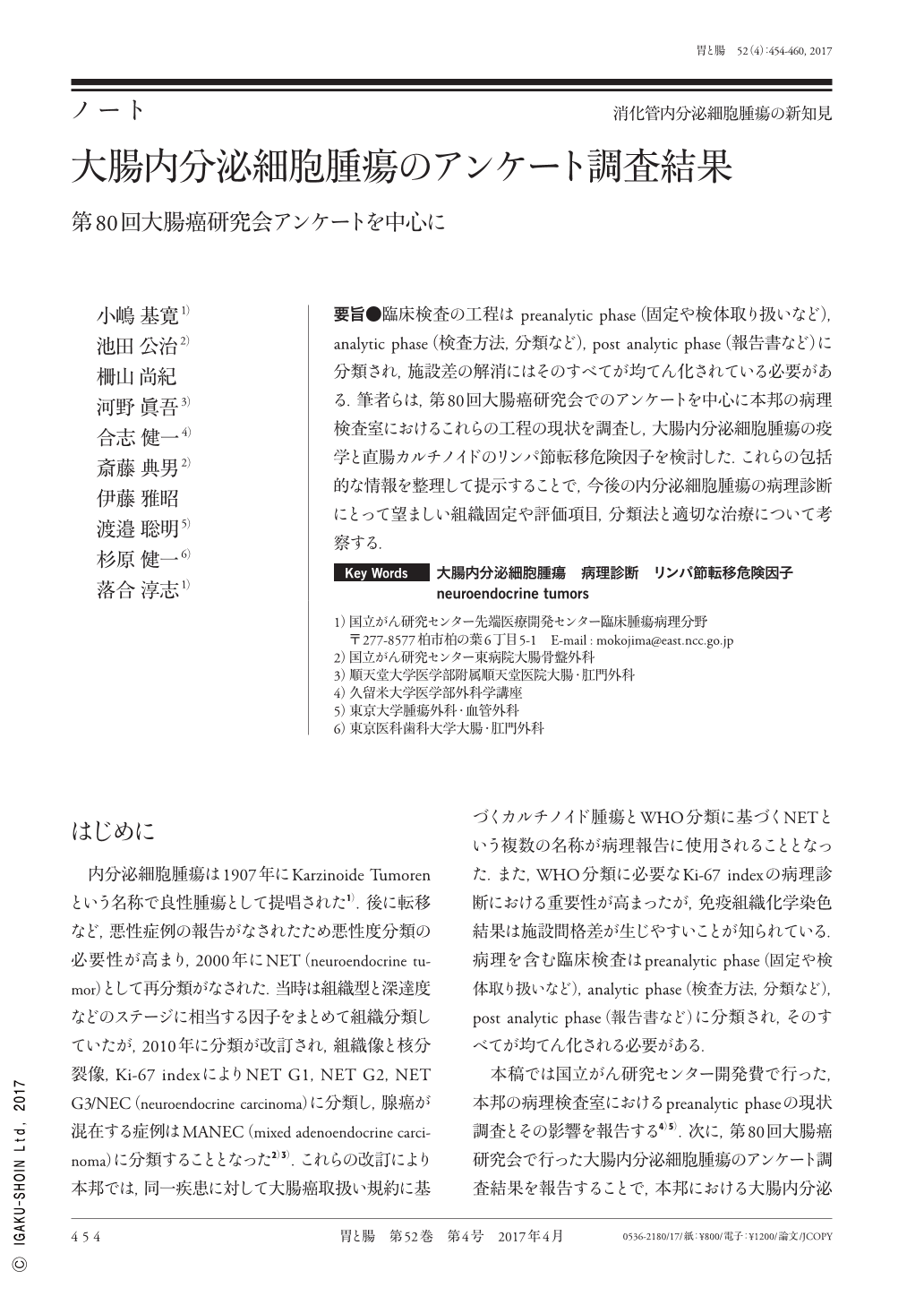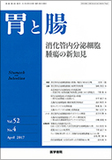Japanese
English
- 有料閲覧
- Abstract 文献概要
- 1ページ目 Look Inside
- 参考文献 Reference
- サイト内被引用 Cited by
要旨●臨床検査の工程は preanalytic phase(固定や検体取り扱いなど),analytic phase(検査方法,分類など),post analytic phase(報告書など)に分類され,施設差の解消にはそのすべてが均てん化されている必要がある.筆者らは,第80回大腸癌研究会でのアンケートを中心に本邦の病理検査室におけるこれらの工程の現状を調査し,大腸内分泌細胞腫瘍の疫学と直腸カルチノイドのリンパ節転移危険因子を検討した.これらの包括的な情報を整理して提示することで,今後の内分泌細胞腫瘍の病理診断にとって望ましい組織固定や評価項目,分類法と適切な治療について考察する.
In this study, we aimed to assess the current pathological diagnostic status and epidemiology of colorectal NET(neuroendocrine tumor)in Japan. We distributed a questionnaire to Japanese pathological laboratories to comprehensively assess the current status of the preanalytic to postanalytic phase in these laboratories. We then re-evaluated 760 colorectal NETs in these institutions using WHO 2010 classification to assess risk factors of lymph node metastasis. We summarized the available comprehensive and basic information to determine the optimal diagnostic system for colorectal NET. Most institutions used formalin for fixation, but nonbuffered formalin was also used in 32.7% of them. The fixation time was also variable. Most NETs in Japan were diagnosed using routine immunohistochemical and histochemical analyses. These were also used to assess vascular invasion. However, mitotic count and Ki-67 index were assessed using fewer cell numbers and fields than those recommended by WHO. From the data of the 760 colorectal NETs, lymph node metastases were found in nine patients with lesions smaller than 10mm, and vascular invasion was the most important predictive factor of lymph node metastasis. Our basic data will contribute to the establishment of optimal pathological diagnostic and therapeutic systems in the future.

Copyright © 2017, Igaku-Shoin Ltd. All rights reserved.


